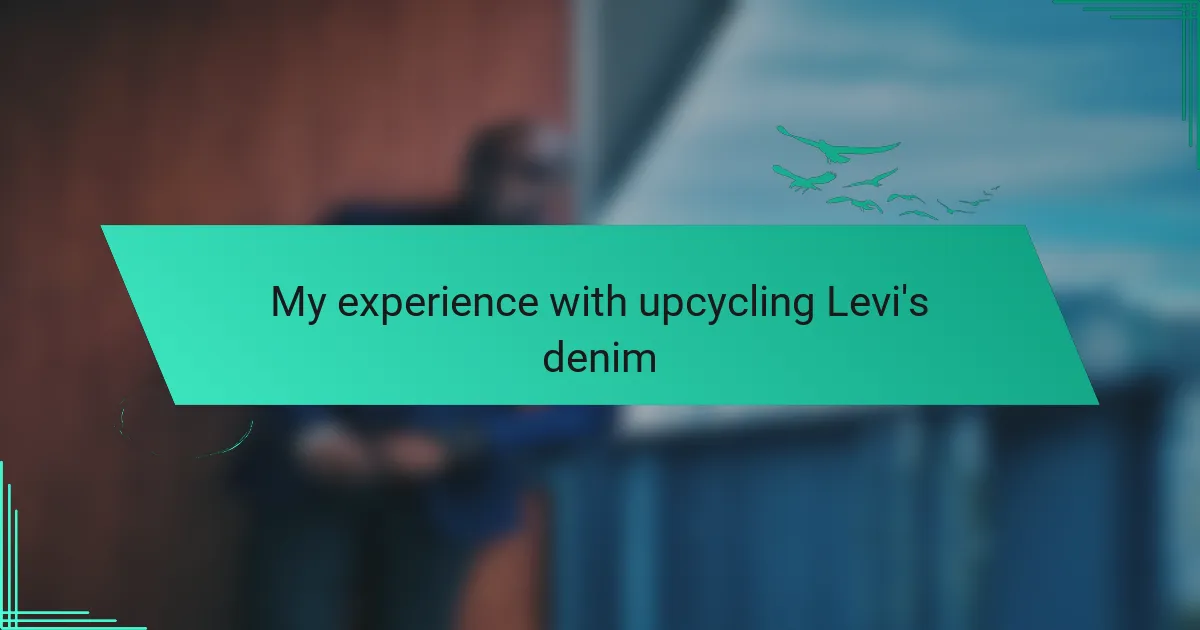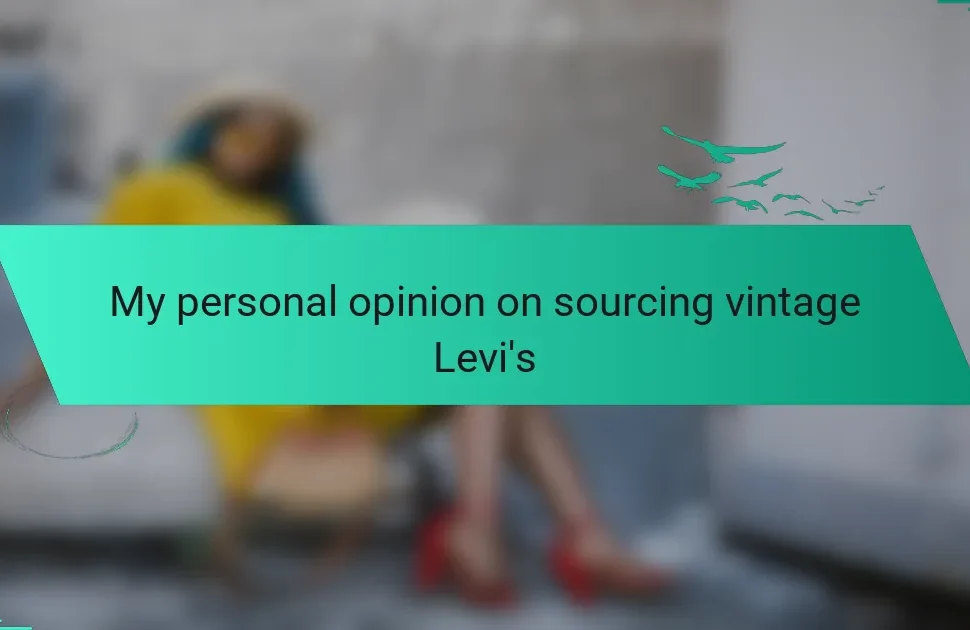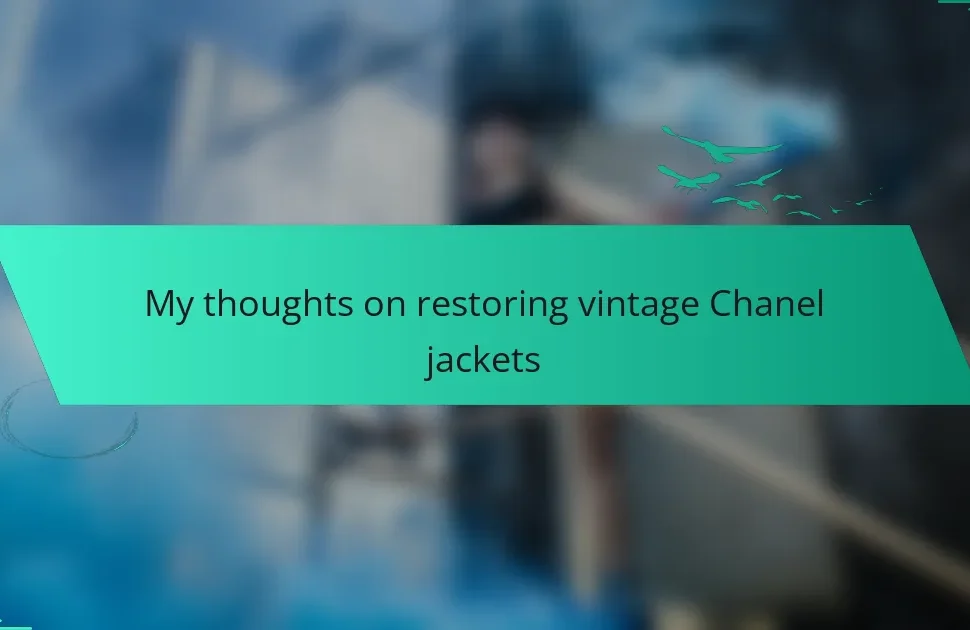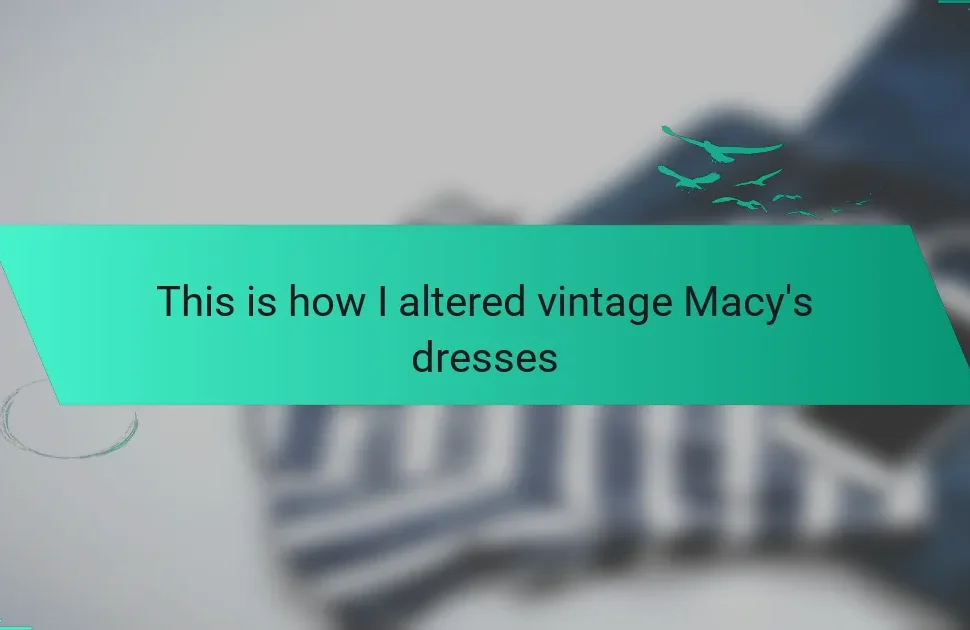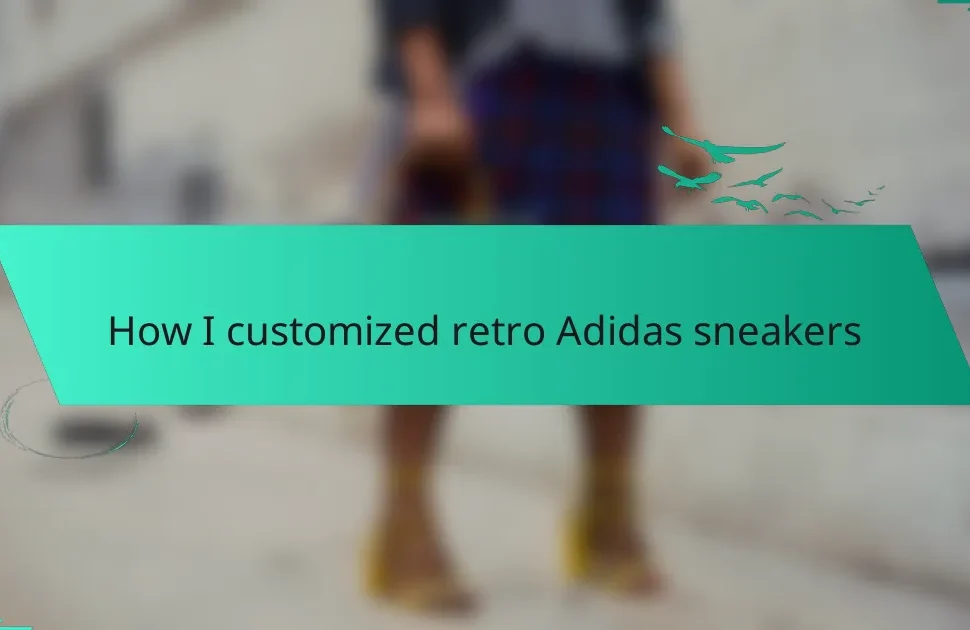Key takeaways
- Upcycling denim creatively transforms old fabrics into unique items, promoting sustainability and personal expression.
- Essential tools for denim upcycling include a sewing machine, denim needles, fabric scissors, and measuring tools for precise work.
- Embracing imperfection and experimenting with textures can enhance the uniqueness of upcycled projects, adding character and charm.
- Documenting the upcycling process can provide insight into personal growth and creativity in crafting unique pieces.
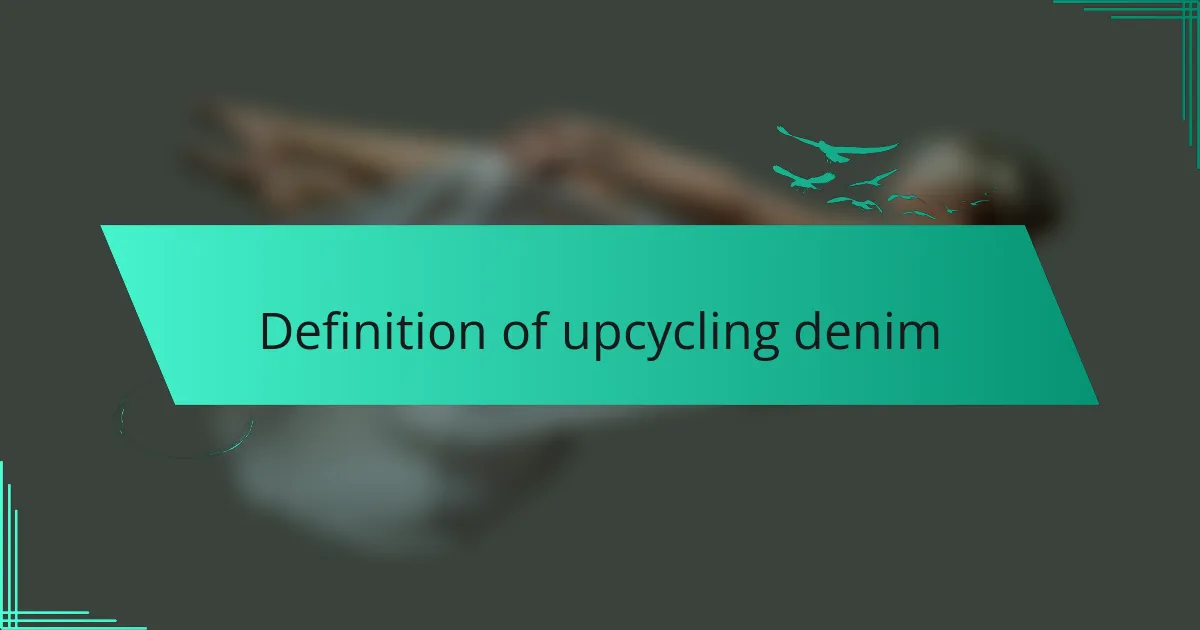
Definition of upcycling denim
Upcycling denim refers to transforming old or unwanted denim materials into something new and valuable. It’s a creative way to breathe life into what might otherwise be discarded, turning worn-out jeans into stylish bags or unique home décor. I remember feeling genuinely excited as I face the pile of old Levi’s in my closet—each pair telling a story, yet begging for a fresh purpose.
When I first ventured into upcycling, I was surprised by the endless possibilities. What if I took those frayed edges and made them into a trendy denim skirt? This thought sparked my imagination and led me to explore various projects, realizing that upcycling not only reduces waste but also allows for personal expression. Each stitch became a small act of creativity and sustainability.
Moreover, upcycling denim fosters a connection to the past while crafting something new. Have you ever noticed how a simple pair of jeans can hold memories from countless adventures? Transforming them into something unique allows you to carry those memories forward in a beautiful, eco-friendly way.
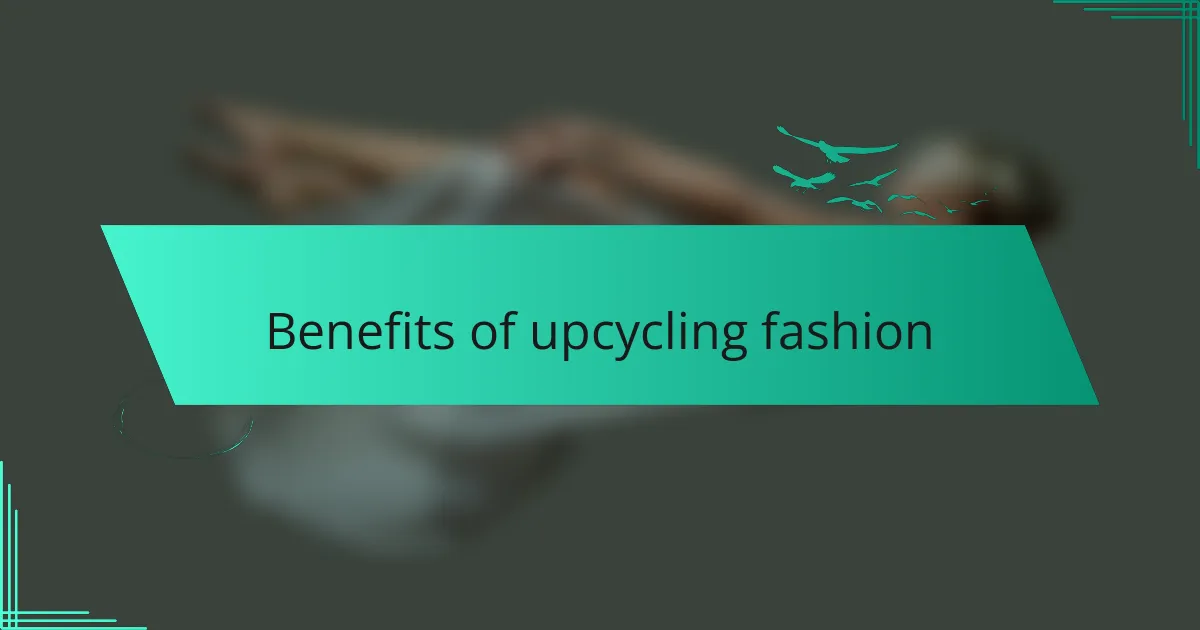
Benefits of upcycling fashion
Upcycling fashion, particularly with denim, offers incredible sustainability benefits. By repurposing old jeans, we decrease the environmental impact of textile waste. I can’t help but feel proud knowing that my DIY projects contribute to a greener planet. It’s fulfilling to think that with each transformation, I’m helping to extend the life cycle of the fabric I love.
On a more personal level, upcycling ignites creativity in ways I never anticipated. When working on my Levi’s projects, I often find myself lost in the process—turning a simple pair of jeans into a one-of-a-kind piece. It’s almost meditative. Have you ever turned towards a craft project only to realize how fulfilling it can be? The ability to infuse my style into each piece makes me feel like an artist, and honestly, that’s a rewarding experience.
Emotionally, upcycling also provides a therapeutic outlet. There’s something special about taking something particularly meaningful, like a favorite pair of Levi’s, and transforming it into a new favorite item. I cherish those moments of reflection as I sew and cut, which reminds me of the past while creating something practical for today. The stories woven into each piece become a part of my current style, allowing me to celebrate memories even as I move forward.
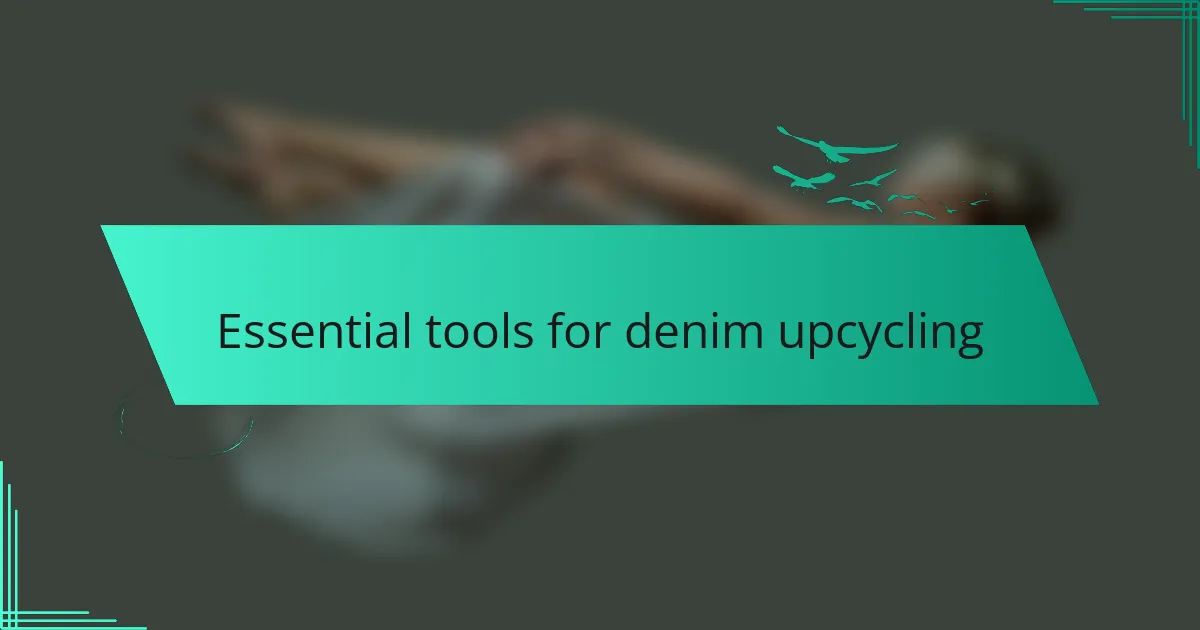
Essential tools for denim upcycling
When I first started upcycling Levi’s denim, I quickly realized that having the right tools makes all the difference. It can be quite frustrating to work on a project without the essentials, so I made sure to gather everything I needed before diving in. The satisfaction of transforming an old pair of jeans into something new is incredible, especially when you see the final product come to life with just a few tools at hand.
Here’s a list of essential tools that I found indispensable for my denim upcycling projects:
- Sewing machine: A sturdy machine for durable stitching is a must.
- Denim needles: These needles are specifically designed to handle thick fabric without breaking.
- Fabric scissors: Sharp scissors make cutting through layers a breeze.
- Ruler or measuring tape: Precision is key in achieving the desired look.
- Pins and clips: To hold your pieces in place while sewing.
- Iron and ironing board: Pressing your seams makes a huge difference in the finished product.
- Embroidery thread and needle: For adding unique designs that give your denim a personal touch.
- Paint or fabric dye: Enhance your pieces and give them a fresh vibe.
- Distressing tools: For those edgy, worn-in looks that give your jeans character.
These tools not only made my projects easier but also fueled my creativity, allowing me to explore new ideas and styles. It’s amazing how something as simple as a needle and thread can awaken your artistic spirit!
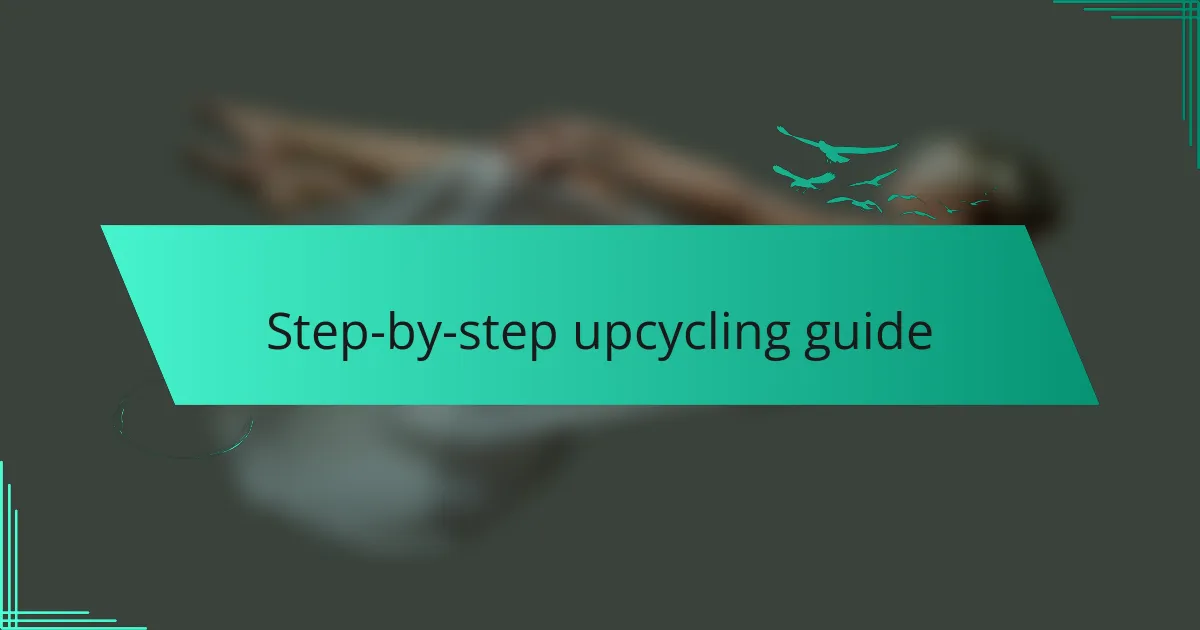
Step-by-step upcycling guide
When I decided to upcycle my Levi’s denim, I started by choosing a project that excited me. After picking an old pair of jeans, I made a rough sketch of what I wanted to create—a stylish crossbody bag. I found that mapping out my idea helped clarify what steps I needed to take. Have you ever felt a rush of inspiration when brainstorming a new project? It’s like the creative juices start flowing and suddenly you can’t wait to get to work!
Next, I cut the jeans according to my design, making sure to leave enough fabric for seam allowances. I remember the first time I snipped through the denim; there was a mix of anticipation and a hint of nostalgia. Each cut felt like opening the door to new possibilities. As I sewed the pieces together, I could feel the transformation taking shape right in my hands. Isn’t it amazing how fabric can evolve into something entirely different?
Finally, I added personal touches, like a fun lining and some embellishments, to really make the bag my own. This part allowed me to infuse my personality into the project and reflect on my journey with this pair of jeans. As I placed the final stitches, I experienced a sense of achievement that can only come from creating something unique from the old. What’s your favorite way to add a personal flair to your projects? It’s those little details that truly make our creations special.
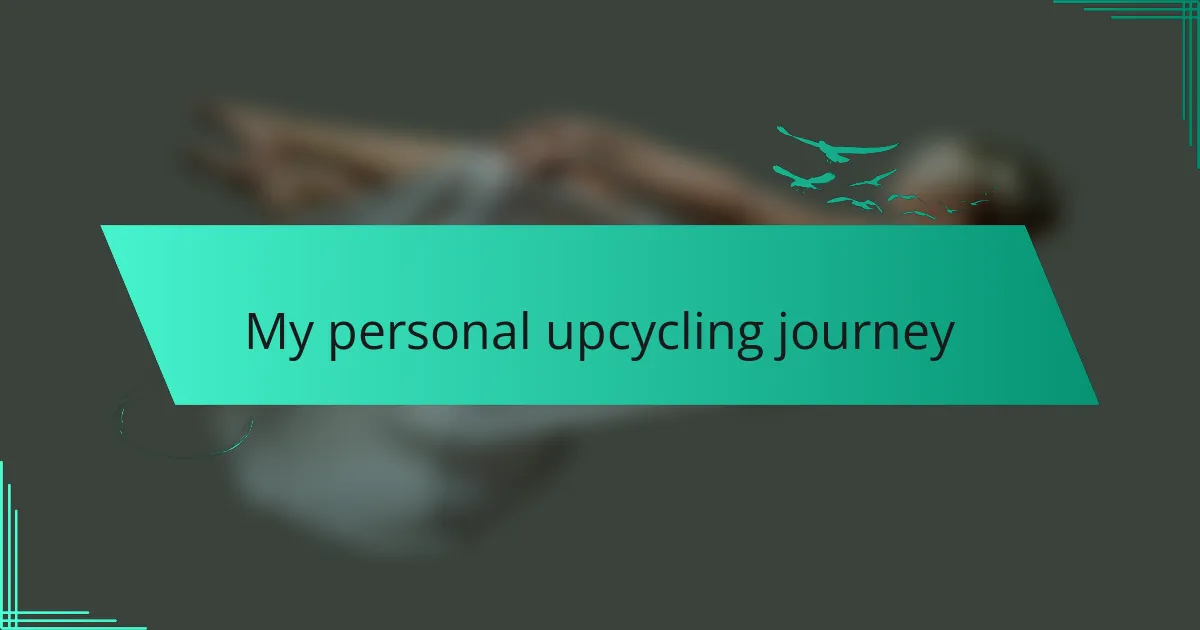
My personal upcycling journey
My personal upcycling journey has been quite rewarding. When I discovered the potential of upcycling Levi’s denim, it felt like uncovering hidden treasure in my closet. I remember the first pair I transformed—a worn-out pair of 501s that I didn’t wear anymore. With a little creativity, I turned them into a stylish denim tote bag that became my go-to for weekend outings.
As I dove deeper into this eco-friendly craft, I found that each project allowed me to express my individuality. The process is not just about saving money; it’s about storytelling through fashion. Each finished piece carries a memory, a sense of nostalgia, and a bit of my personality.
Here’s a little comparison of different upcycling techniques I explored:
| Technique | Results |
|---|---|
| Cutting and sewing into a bag | Unique tote bag that’s practical and stylish |
| Patchwork redesign | Fun and colorful statement piece with history |
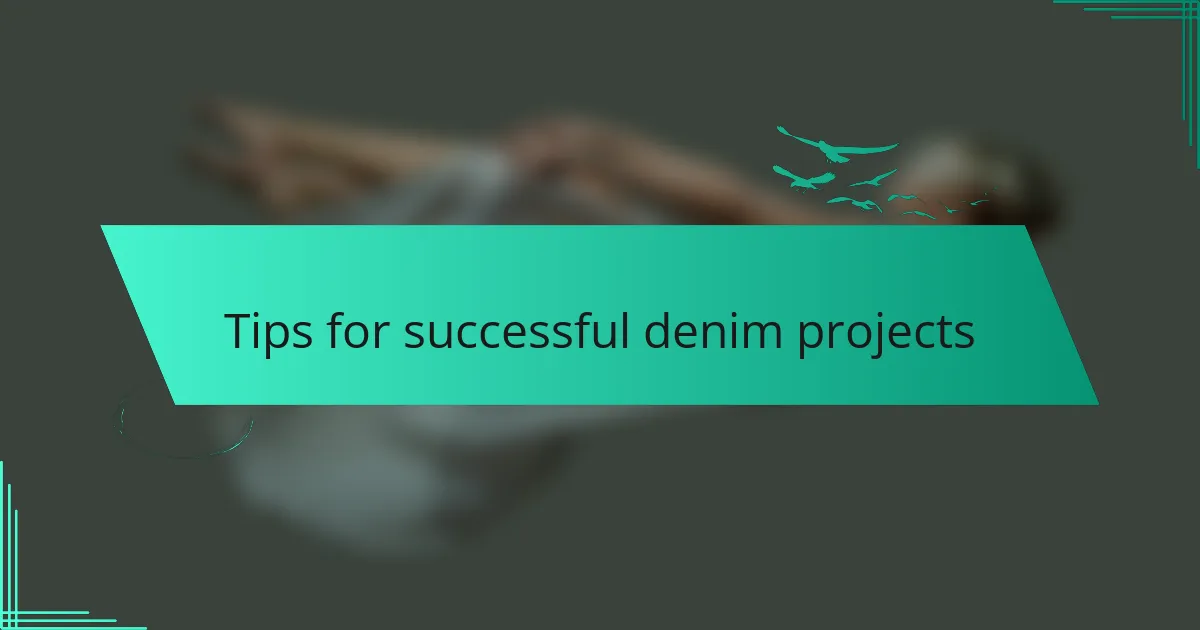
Tips for successful denim projects
When embarking on a denim upcycling project, one of the best tips I can offer is to embrace imperfection. I vividly remember my first attempt at creating a denim bag; the stitches weren’t perfect, and there were a few unexpected frays. Instead of viewing these as flaws, I chose to see them as character. Each imperfection tells a story, and honestly, that’s part of the charm of upcycling. Have you ever felt that a little ‘roughness’ adds genuine personality to handmade items?
Another crucial tip is to play with textures and colors. When I was working on a denim jacket project, I incorporated old lace and patches from fabric remnants. The combination transformed the jacket from simple to stunning. It’s fascinating how a few vibrant colors or complementary patterns can elevate your work. What textures inspire you? I encourage you to explore beyond just denim; mixing materials can lead to new artistic expressions.
Lastly, I always recommend documenting your process. It helps not only to track your progress but also allows you to reflect on your creative journey. I’ve captured moments from each project, from the initial sketches to the finished pieces. Looking back, it’s rewarding to see how much I’ve grown in my craft. Have you ever revisited your past projects and felt a sense of pride? It’s a great reminder of your unique journey in the world of upcycling.
